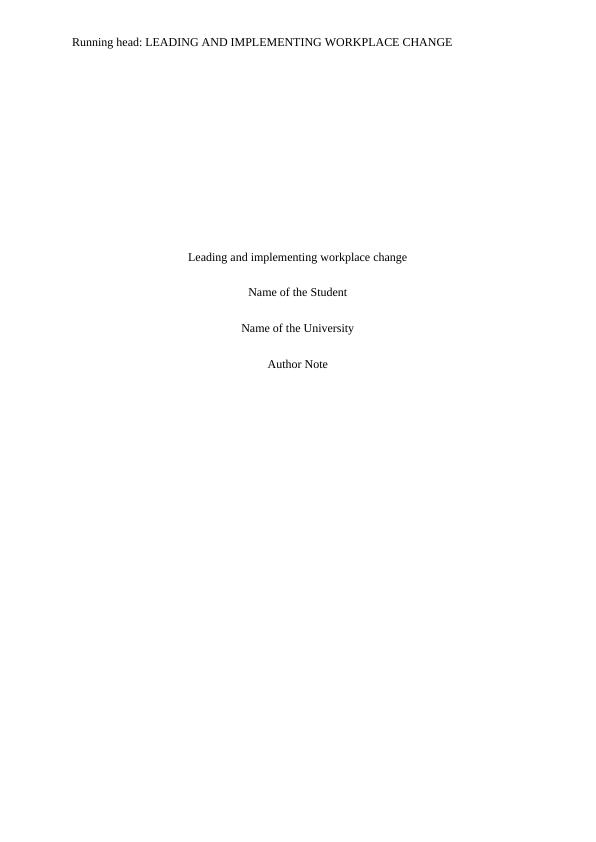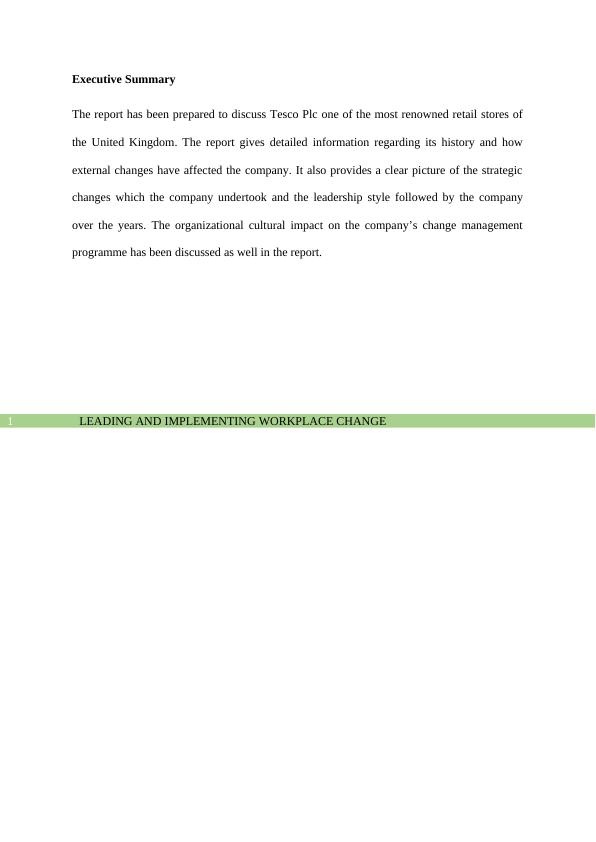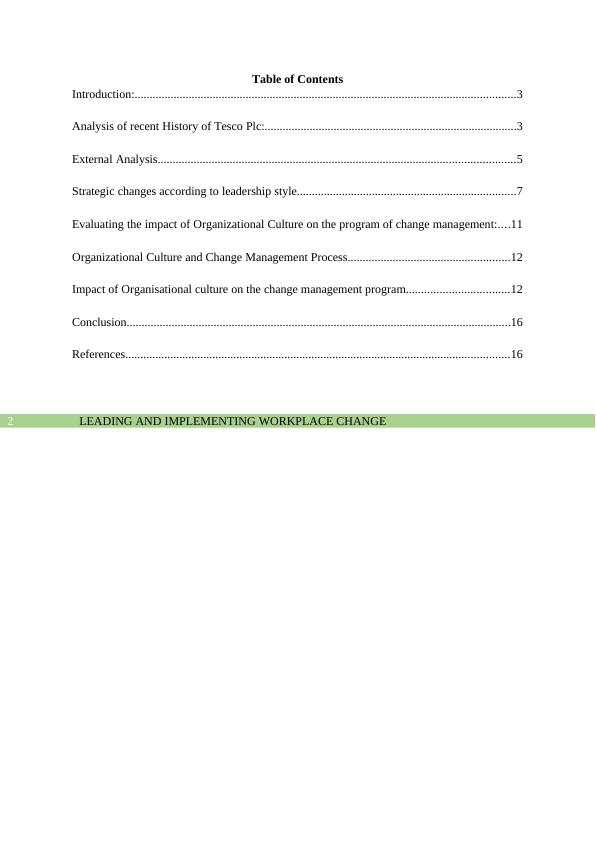Leading and Implementing Workplace Change
This assignment is for the course BA Leadership and Management Skills for the Workplace. The assignment is about leading and implementing workplace change and has a word count of 5,000 words. The submission details require the student's name, student number, module title, assignment title, and module lecturer's name to be clearly shown on the front page. The assignment must be submitted electronically to Moodle and should not be put into Turnitin. The assignment specification includes information about referencing and submission deadlines.
Added on 2022-09-10
Leading and Implementing Workplace Change
This assignment is for the course BA Leadership and Management Skills for the Workplace. The assignment is about leading and implementing workplace change and has a word count of 5,000 words. The submission details require the student's name, student number, module title, assignment title, and module lecturer's name to be clearly shown on the front page. The assignment must be submitted electronically to Moodle and should not be put into Turnitin. The assignment specification includes information about referencing and submission deadlines.
Added on 2022-09-10
End of preview
Want to access all the pages? Upload your documents or become a member.






